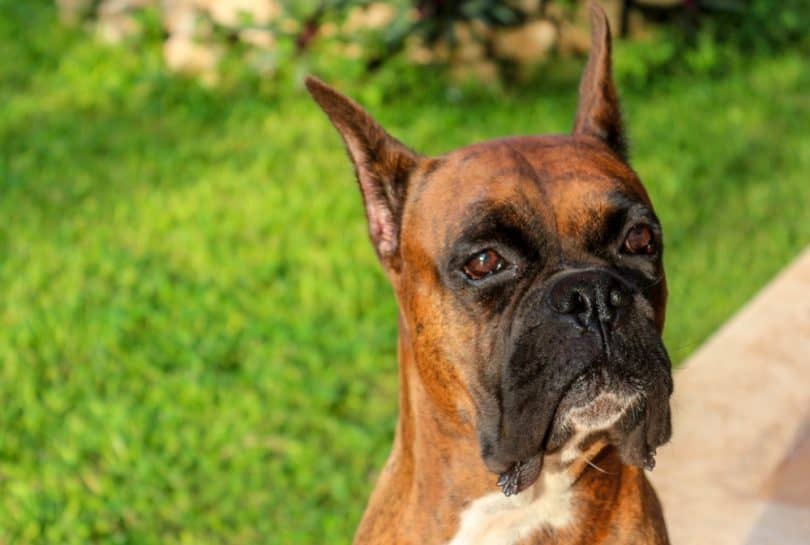Boxer ear is a condition that affects many individuals, particularly those involved in combat sports such as boxing and mixed martial arts. This injury, also known as auricular hematoma, occurs when blood collects between the cartilage and skin of the outer ear, leading to swelling and deformity. In this article, we will explore the causes, symptoms, and treatment options for boxer ear, providing valuable insights for athletes and the general public alike.
Understanding boxer ear is essential not only for those who participate in combat sports but also for coaches, trainers, and medical personnel who deal with these athletes. An early diagnosis and appropriate treatment can prevent long-term complications such as permanent deformity or loss of hearing. In the following sections, we will delve deeper into what causes boxer ear, how to recognize its symptoms, and the best practices for treatment and prevention.
This comprehensive guide aims to provide expert knowledge on boxer ear, ensuring that readers gain a clear understanding of this condition. By discussing both medical and practical aspects, we hope to empower individuals with the information they need to manage and prevent this injury effectively.
Table of Contents
- What is Boxer Ear?
- Causes of Boxer Ear
- Symptoms of Boxer Ear
- Treatment Options for Boxer Ear
- Preventing Boxer Ear
- When to See a Doctor
- Potential Complications of Boxer Ear
- Conclusion
What is Boxer Ear?
Boxer ear, medically known as auricular hematoma, is a condition characterized by a collection of blood between the cartilage and the skin of the outer ear. This condition is common among athletes involved in contact sports, particularly boxing, hence the name "boxer ear." When the ear sustains trauma, such as from punches or falls, blood vessels can rupture, leading to swelling and deformity if left untreated.
Biographical Data of Boxer Ear
| Term | Description |
|---|---|
| Condition Name | Boxer Ear (Auricular Hematoma) |
| Common Causes | Trauma or injury to the ear, typically from contact sports |
| Symptoms | Swelling, pain, discoloration, deformity |
| Treatment | Draining the hematoma, compression dressings, possible surgical intervention |
Causes of Boxer Ear
The primary cause of boxer ear is blunt trauma to the outer ear. This trauma can occur in various forms, including:
- Punches or strikes during boxing or mixed martial arts
- Falls or accidents in contact sports
- Repeated friction or pressure on the ear
When the ear is injured, blood vessels may burst, resulting in a hematoma. If the hematoma is not drained promptly, it can lead to the characteristic swelling and deformation associated with boxer ear.
Symptoms of Boxer Ear
Recognizing the symptoms of boxer ear is crucial for timely treatment. Common symptoms include:
- Swelling of the outer ear
- Pain or tenderness in the affected area
- Red or purple discoloration of the ear
- A feeling of fullness or pressure in the ear
In severe cases, if the hematoma is left untreated, the ear may develop a permanent deformity known as "cauliflower ear." This condition occurs when the cartilage is damaged and scar tissue forms, leading to an irregular shape.
Treatment Options for Boxer Ear
Treatment for boxer ear typically involves draining the accumulated blood to prevent complications. The following treatment options may be recommended:
- Drainage: A healthcare professional may use a needle or a small incision to drain the hematoma.
- Compression Dressings: After drainage, a compression dressing may be applied to prevent re-accumulation of blood.
- Surgical Intervention: In cases of severe or recurrent hematomas, surgical intervention may be necessary to repair damaged cartilage.
It is important to seek medical attention promptly if symptoms of boxer ear are present to avoid long-term complications.
Preventing Boxer Ear
Preventative measures can significantly reduce the risk of developing boxer ear. Consider the following strategies:
- Wearing protective headgear during training and matches
- Practicing proper techniques to minimize head injuries
- Regularly checking for signs of injury after training sessions
By taking these precautions, athletes can protect themselves from the risk of developing boxer ear and other ear injuries.
When to See a Doctor
If you suspect that you or someone else has boxer ear, it is important to see a doctor promptly. Signs that medical attention is needed include:
- Severe pain or swelling in the ear
- Discoloration or bruising that worsens
- Difficulty hearing or a feeling of fullness in the ear
Early intervention can prevent complications and ensure proper healing.
Potential Complications of Boxer Ear
If left untreated, boxer ear can lead to several complications, including:
- Permanent deformity of the ear (cauliflower ear)
- Infection of the hematoma
- Loss of hearing due to damage to the ear structures
Understanding these risks underscores the importance of seeking timely medical care for suspected boxer ear.
Conclusion
Boxer ear is a common injury among individuals involved in contact sports, characterized by swelling and deformity of the outer ear. Understanding the causes, symptoms, and treatment options for boxer ear is crucial for athletes and those involved in their care. By recognizing the signs and seeking prompt medical attention, individuals can prevent long-term complications and ensure proper healing. If you found this article informative, please consider leaving a comment or sharing it with others who may benefit from this knowledge.
Thank you for reading our comprehensive guide on boxer ear. We invite you to explore more articles on our site for valuable information on sports injuries and health-related topics.
Kim Superstar: The Rise Of A Global Icon
Bridgit Mendler: Exploring Her Jewish Heritage And Impact On Pop Culture
Understanding Twitter: A Comprehensive Guide To The Social Media Giant


